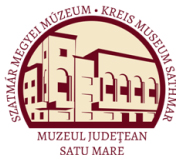Marta, Liviu: The Late Bronze Age Settlements of Petea-Csengersima (Satu Mare, 2009)
IV. Habitation of the Lăpuş II-Gáva I Archaeological Culture
greater importance of bowls with inverted rim649. Their origin is attributed to the inheritance from the Hajdúbagos—Cehăluţ cultural group that descends from the Otomani culture650 651 652 653 654. The conclusion of the previously presented comparison is that the pottery assemblage from the horizon of bi-chrome channelled pottery from Petea—Csengersima is similar to the pottery of the Lăpuş II phase and the pottery of the Gáva 1 phase. The differences that appear within the pottery of these find groups may be attributed to the local inheritance shown by the ceramic material from different regions on the lower course of the Someş and Crasna rivers, and respectively the Upper Tisa Basin. Regarding the beginning of the settlement at Petea-Csengersima there needs to be reminded that the link between the Suciu de Sus and Lăpuş II—Gáva I habitations was not clearly detected. It was considered that the archaeological contexts in which the pottery of the two habitations appear together are sufficiently expressive to indicate without a doubt their simultaneous employment. The possibility that the two habitations meet from a chronological point of view is suggested by some observations that resulted from the analysis of the material. First of all it should be noted that already within the Suciu de Sus pottery there are some noticeable late elements like the bi-chrome colour of the pottery (red-black) or the presence of type 4 cups. The ornament formed from deeply incised lines found on a great number of cups from the Lăpuş II—Gáva I habitation indicates that the decoration technique through excision-incision is maintained (as in the Lăpuş II phase or the Gáva I type pottery from the region of Carei). In the necropolis at Lăpuş and within the find from Libotin the transition from excised potter)- to channelled black-red pottery is well illustrated, datable more or less towards the end of the BzD stage. The chief arguments are based on two types of bronze pieces with analogies within the Uriu-Opályi type deposits. These are represented by the brackets in the shape of “8” from tumulus no. 9 at Lăpuş (analogies in the Domăneşti II deposit) and the axe with disc and spike of type 3B, variant Dobrocina, considered an early variant of this type631. The employment of excised pottery (of Stanovo/ Suciu de Sus type) and of bichrome channelled pottery (of Gáva I type) was observed in the setdement at Kvasovo (I)63". Close to the settlement two bronze deposits of the Uriu-Opályi type had been discovered, one of them dated in BzC and the other in BzD. The deposits had been related to the setdement, the materials found within them were used to define the Stanovo Suciu de Sus III phase. This phase was considered to have a similar material with the Lăpuş II phase and to that of the settlements at Carei and Berveni633. Only after the publishing of archaeological complexes with expressive ceramic material will there be a possibility of assessing the extent to which the important Kvasovo I settlement illustrates a transition from the employment of excised pottery to that of bi-chrome channelled pottery. In these conditions it is difficult to appreciate the exact relation between the two bronze deposits and the duration of the two settlements of the Stanovo/ Suciu de Sus culture (phases I, II and III) present in Kvasovo6 ’4. The transition from excised pottery to channelled pottery appears to be illustrated in an interesting manner in the settlements at Berveni and Carei (The Plain of Carei). The 649 Németi 1990, p. 41. 650 Németi 1990, p. 42, 46. 651 Kacsó 2001, p. 235-238. 652 Kobal' 2007, p. 592-599. 653 Kobal' 2007, p. 595-596. 654 4500 m from the Kvasovo I settlement research was carried out in a second setdement (Kvasovo II) in which a Suciu de Sus/ Stanovo I habitation and a Suciu de Sus/ Stanovo II habitation are present. In the more recent habitation a knob from a bracelet with spiralled ends was found, specific of Koszider type deposits (Kobal' 2007, p. 592, pi. 7/ 17). Regarding the pottery of the setdement it can be said that it has an aspect characteristic of the period of the beginning of the Suciu II phase (Kacsó). Therefore there is a possibility that the beginning of the neighbouring setdement (Kvasovo I) can be found already in the Suciu de Sus II phase (Kacsó). 91
